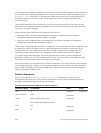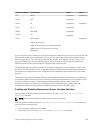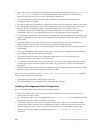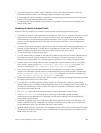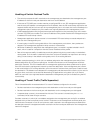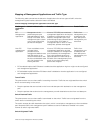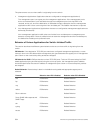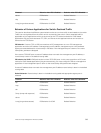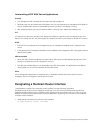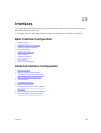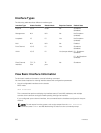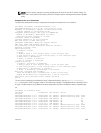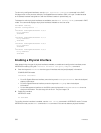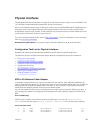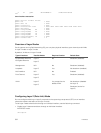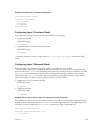Interworking of EIS With Various Applications
Stacking
• The management EIS is enabled on the master and the standby unit.
• Because traffic can be initiated from the Master unit only, the preference to management EIS table for
switch-initiated traffic and all its related ARP processing is done in the Master unit only.
• ARP-related processing for switch-destined traffic is done by both master and standby units.
VLT
VLT feature is for the front-end port only. Because this feature is specific to the management port, this
feature can coexist with VLT and nothing specific needs to be done in this feature to handle VLT scenario.
DHCP
• If DHCP Client is enabled on the management port, a management default route is installed to the
switch.
• If management EIS is enabled, this default route is added to the management EIS routing table and the
default routing table.
ARP learn enable
• When ARP learn enable is enabled, the switch learns ARP entries for ARP Request packets even if the
packet is not destined to an IP configured in the box.
• The ARP learn enable feature is not applicable to the EIS routing table. It is applicable to the default
routing table only to avoid unnecessary double ARP entries
Sflow
sFlow management application is supported only in standalone boxes and switch shall throw error
message if sFlow is configured in stacking environment
Designating a Multicast Router Interface
To designate an interface as a multicast router interface, use the following command.
Dell Networking OS also has the capability of listening in on the incoming IGMP general queries and
designate those interfaces as the multicast router interface when the frames have a non-zero IP source
address. All IGMP control packets and IP multicast data traffic originating from receivers is forwarded to
multicast router interfaces.
• Designate an interface as a multicast router interface.
ip igmp snooping mrouter interface
386
Internet Group Management Protocol (IGMP)



